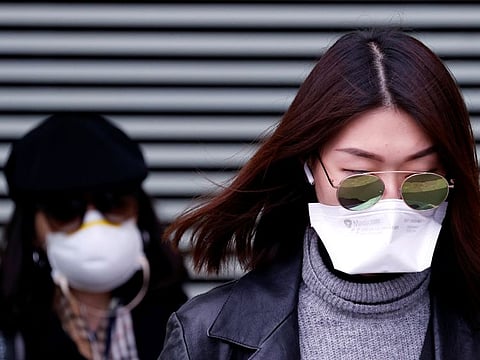COVID-19: Proof that a mask can protect you
Experiment shows the difference in droplet splatter before and after covering the face

If there’s been even a speckle of doubt over whether you should wear a mask before going near others, here’s a look at an experiment that will ensure you never forget to.
A report published in The New England Journal of Medicine showed the results of a laser light-scattering experiment in which speech-generated droplets and their trajectories were visualised.
The conclusion drawn was that droplets expelled from a speaker’s mouth – which may be rich in the coronavirus that has now infected more than 200,000 globally - decreased in instances of speech at a lower volume and were almost eliminated when the speaker’s mouth was covered with a damp cloth.
This was a test to see how many droplets would be produced by talking – some studies record the same expulsion when coughing.
So how was it done?
The study explained: “The output from a 532-nm green laser operating at 2.5-W optical power was transformed into a light sheet that was approximately 1 mm thick and 150 mm tall.”
This light sheet was directed through slits on the sides of a cardboard box measuring 53×46×62 cm. “The interior of the box was painted black. The enclosure was positioned under a high-efficiency particulate air (HEPA) filter to eliminate dust,” the report explained.
“When a person spoke through the open end of the box, droplets generated during speech traversed approximately 50 to 75 mm before they encountered the light sheet. An iPhone 11 Pro video camera aimed at the light sheet through a hole (7 cm in diameter) on the opposite side of the box recorded sound and video of the light-scattering events at a rate of 60 frames per second. The size of the droplets was estimated from ultrahigh-resolution recordings,” it added.
The subject repeated the words ‘stay healthy’, with and without a mask. The brightness of the flashes in the box corresponded with the size, number and time the particles were in a 16.7-msec frame of the video.
The phrase was repeated three times without a mask first, but with changes in intensity of volume. The flashes numbered as much as 347 at the loudest decibel and as low as 227.
Then, the words were spoken with a damp washcloth over the speaker’s mouth; the flash count was close to the 0.1 flashes; and a decrease in the number of forward-moving droplets.
How does this translate into real life?
If you wear a mask, you protect the people you come into contact with from germs or viruses you may have. If the ones you come near have a mask, they protect you.
Stay safe, wear your mask.
Sign up for the Daily Briefing
Get the latest news and updates straight to your inbox







